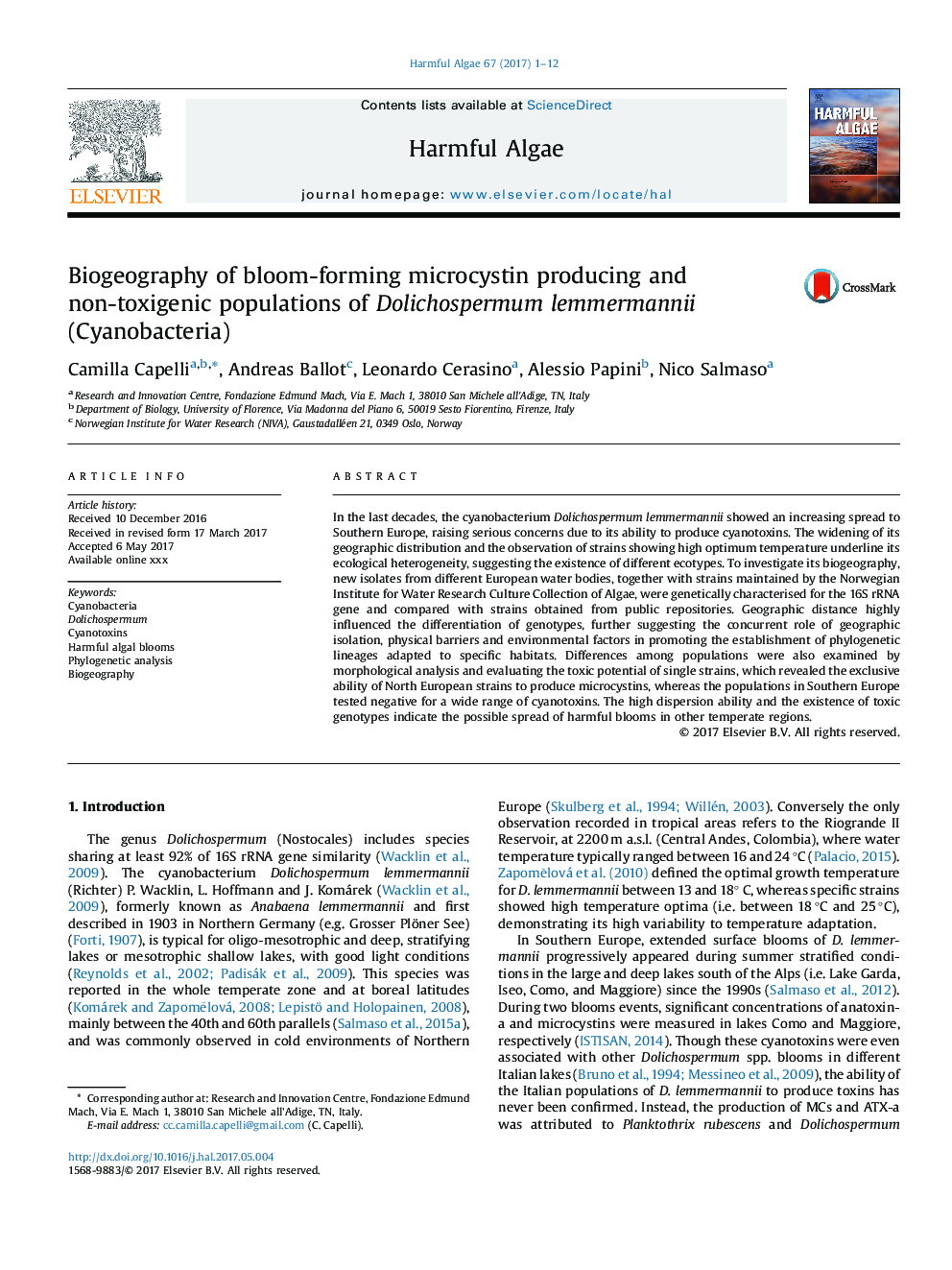| Article ID | Journal | Published Year | Pages | File Type |
|---|---|---|---|---|
| 5765710 | Harmful Algae | 2017 | 12 Pages |
Abstract
In the last decades, the cyanobacterium Dolichospermum lemmermannii showed an increasing spread to Southern Europe, raising serious concerns due to its ability to produce cyanotoxins. The widening of its geographic distribution and the observation of strains showing high optimum temperature underline its ecological heterogeneity, suggesting the existence of different ecotypes. To investigate its biogeography, new isolates from different European water bodies, together with strains maintained by the Norwegian Institute for Water Research Culture Collection of Algae, were genetically characterised for the 16S rRNA gene and compared with strains obtained from public repositories. Geographic distance highly influenced the differentiation of genotypes, further suggesting the concurrent role of geographic isolation, physical barriers and environmental factors in promoting the establishment of phylogenetic lineages adapted to specific habitats. Differences among populations were also examined by morphological analysis and evaluating the toxic potential of single strains, which revealed the exclusive ability of North European strains to produce microcystins, whereas the populations in Southern Europe tested negative for a wide range of cyanotoxins. The high dispersion ability and the existence of toxic genotypes indicate the possible spread of harmful blooms in other temperate regions.
Keywords
Related Topics
Life Sciences
Agricultural and Biological Sciences
Aquatic Science
Authors
Camilla Capelli, Andreas Ballot, Leonardo Cerasino, Alessio Papini, Nico Salmaso,
